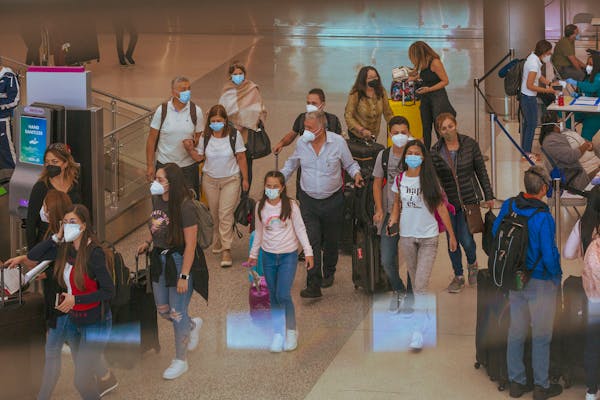Minnesota has identified 129 infections with the delta variant of the coronavirus that causes COVID-19, but it so far has not fueled an increase in pandemic activity here that's occurring this summer in Missouri and several Southern and Mountain states.
Tracking of more infectious variants has slowed in Minnesota alongside an overall reduction in COVID-19 cases. The state on Wednesday reported three more COVID-19 deaths and 208 coronavirus infections, raising Minnesota's totals to 7,630 deaths and 607,069 known infections.
The latest weekly federal COVID-19 State Profile Report, released Tuesday, showed Minnesota with the 15th lowest rate of new infections — with Missouri and Arkansas posting the highest state rates.
The positivity rate of COVID-19 diagnostic testing has increased slightly in Minnesota from a low of 1.1% to 1.5% — but that is partly due to reduced testing activity amid the closure of several state testing sites.
COVID-19 hospitalizations in Minnesota declined to 98 on Tuesday, with 22 patients requiring intensive care. At the peak of the spring COVID-19 wave, Minnesota reported 699 hospitalizations.
More than 3 million eligible Minnesotans 12 and older have received COVID-19 vaccine, and more than 2.9 million of them have completed the one- or two-dose series. The state surpassed President Joe Biden's July 4 goal of providing vaccine to 70% of people 18 or older, but has yet to reach its own goal of hitting that mark in people 16 and older.
The rate of vaccine recipients in the 16 and older population in Minnesota is 67.6% — though almost 91% of more vulnerable people 65 and older have received shots.
The state has identified 3,354 breakthrough coronavirus infections in more than 2.9 million fully vaccinated Minnesotans — a rate of .1% that indicates to state health officials that the vaccine is protective. The breakthrough infections include 52 deaths and 371 people who were hospitalized.
Of 196 of those hospitalizations analyzed so far, only 51% of patients were admitted for COVID-19 while the rest were admitted for surgeries or other conditions and had their coronavirus infections identified through routine testing.
Genomic sequencing of a sampling of COVID-19 cases has identified 17,794 infections in Minnesota involving the alpha variant first identified in England, including 18 identified since June 24. That variant was largely responsible for the spring wave that caused Minnesota to have one of the highest new infection rates in the nation in March and April.
The 129 delta variant infections include 19 identified since June 24 and 21 that involved hospital admissions. State health officials remain concerned about elevated hospitalization rates involving people infected by the delta variant that was first identified in India, as well as the gamma variant first identified in Brazil and the beta variant first identified in South Africa.
Infection growth is occurring in states with lower vaccination rates. Fewer than 57% of people in Missouri 18 and older have received COVID-19 vaccine shots. That rate drops below 54% in Arkansas. However, the pandemic also is mirroring a pattern last summer in which infections spread more rapidly in the South and tapered in the Midwest.
Minnesota health officials remain concerned about regional gaps in vaccination that could produce sporadic outbreaks — with 10 mostly rural counties remaining below 50% in the rate of people 16 and older who have received shots.
The state received a boost Tuesday when the federal government announced $19.6 million in grants to 76 rural, critical access hospitals throughout Minnesota to support COVID-19 testing and prevention efforts.
Minnesota was the third-largest recipient, maintaining more rural critical access hospitals than any states other than Texas and Kansas. Several operate in counties with Minnesota's lowest vaccination rates.
Jeremy Olson • 612-673-7744

Review: Conductor Richard Egarr leads the SPCO in a concert filled with gravitas and joy
Dutch broadcaster furious, fans bemused after Netherlands' Joost Klein is booted from Eurovision


